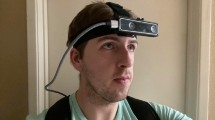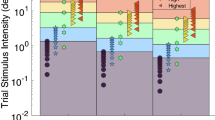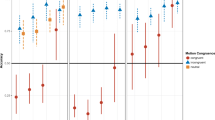Abstract.
Subjective vertical orientation, eye and body movements, and motion sickness all depend on the way our central nervous system deals with the gravito-inertial force resolution problem: how to discern accelerations due to motion from those due to gravity, despite these accelerations being physically indistinguishable. To control body or eye movements, the accelerations due to motion should be known explicitly. Hence, somehow gravity should be filtered out of the specific force or gravito-inertial acceleration (GIA, the sum of both accelerations) as sensed by the otoliths, which are the linear accelerometers in the inner ear. As the GIA also changes in a head-fixed frame of reference when the head is rotated, angular motion as sensed by the semicircular canals in the inner ear should also be considered. We present here a theoretical approach to this problem, and show that the mathematical description of canal–otolith interaction is in fact a three-dimensional equivalent of the two-dimensional description given by Mayne in 1974. A simple low-pass filter is used to divide the GIA into a motion and a gravity component. The retardation of the somatogravic effect by concomitant angular motion during centrifugation is shown as a result. Furthermore we show how the canal–otolith interaction fits within the framework of an observer model to describe subjective vertical orientation, eye movement and motion sickness characteristics. To predict a frequency peak in sickness severity, for example, it is necessary to explicitly include the Mayne equation operating both on sensor afferents and in the internal model. From tilt and translation data from centrifugation and horizontal oscillation, as well as from motion sickness data, we conclude that the time constant of the low-pass filter is in the order of seconds instead of tens of seconds as assumed before. Several corollaries are additionally discussed as a result.
Similar content being viewed by others
Author information
Authors and Affiliations
Additional information
Received: 11 May 2001 / Accepted in revised form: 27 September 2001
Rights and permissions
About this article
Cite this article
Bos, J., Bles, W. Theoretical considerations on canal–otolith interaction and an observer model. Biol Cybern 86, 191–207 (2002). https://doi.org/10.1007/s00422-001-0289-7
Issue Date:
DOI: https://doi.org/10.1007/s00422-001-0289-7




